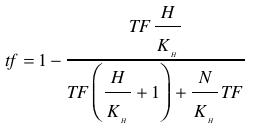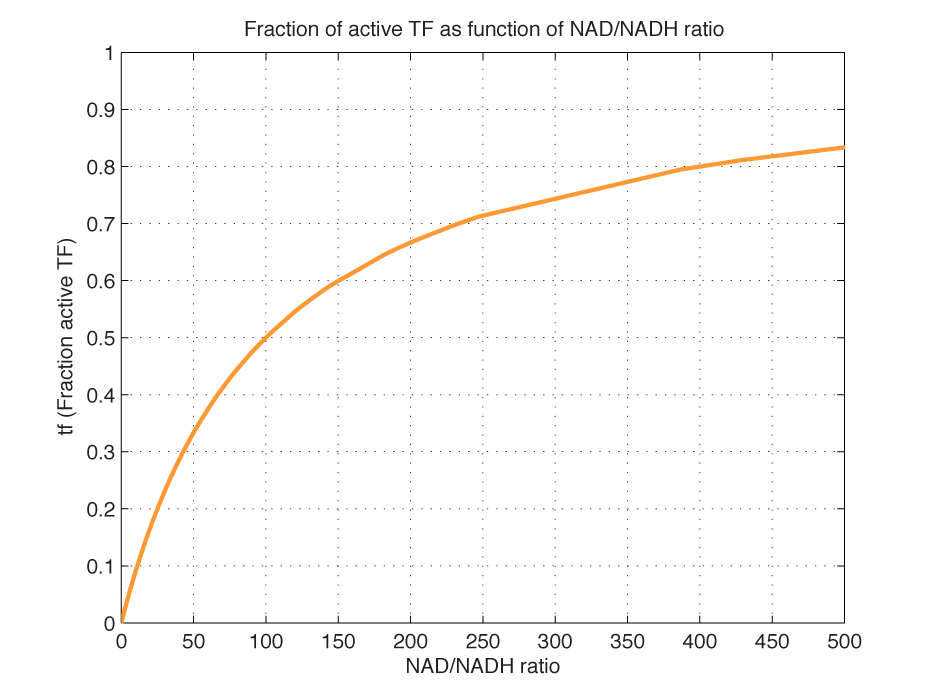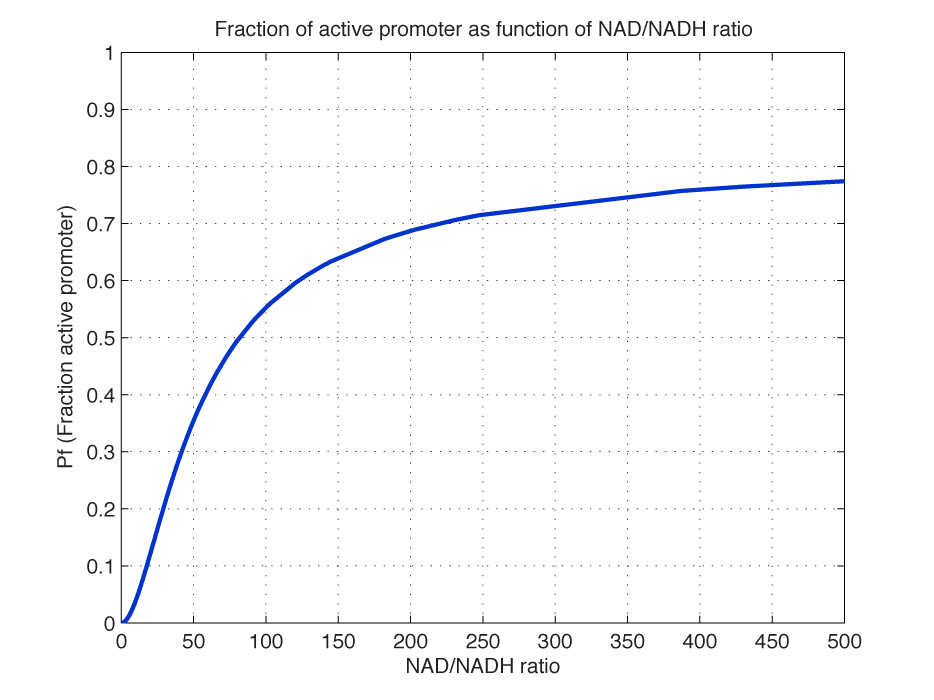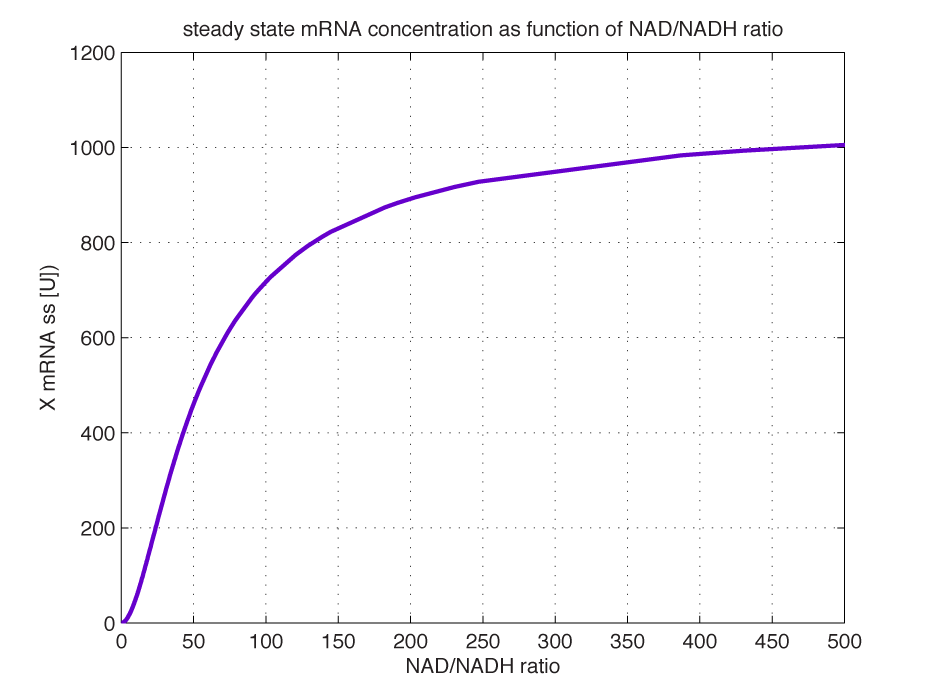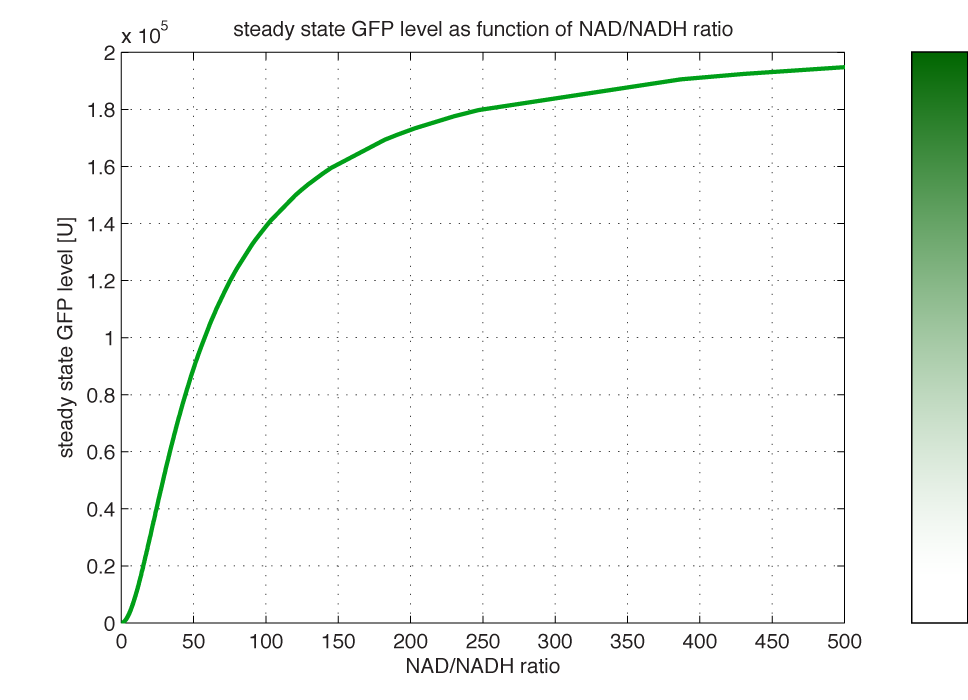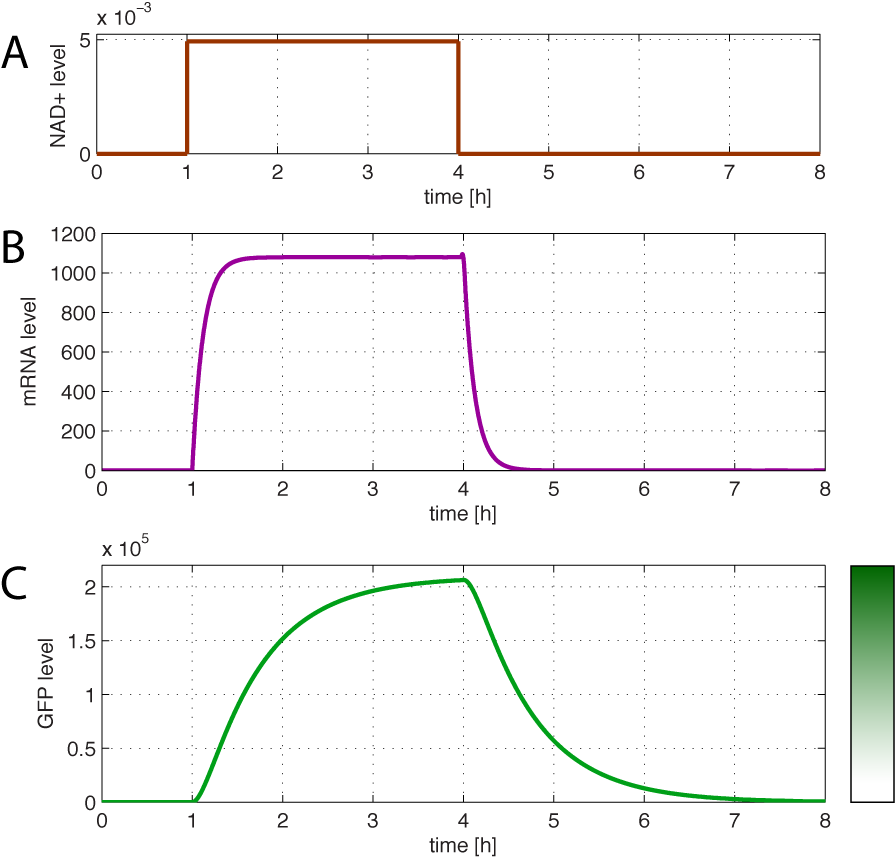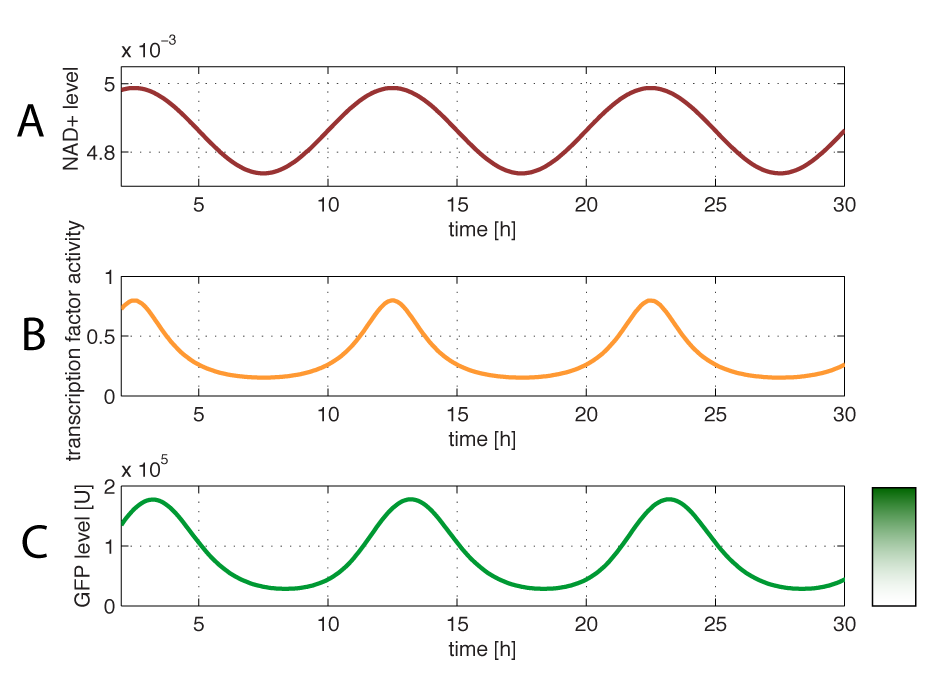Team:DTU Denmark/modelling
From 2009.igem.org
(Difference between revisions)
| (9 intermediate revisions not shown) | |||
| Line 165: | Line 165: | ||
<tr> | <tr> | ||
<td width="163px" height="100%" valign="top"> | <td width="163px" height="100%" valign="top"> | ||
| - | + | <!-- | |
| + | <font color="#990000" face="arial" size="3"> | ||
<br> | <br> | ||
Also check out our Danish website<br><br> | Also check out our Danish website<br><br> | ||
| Line 173: | Line 174: | ||
<br> | <br> | ||
</font> | </font> | ||
| + | --> | ||
</td> | </td> | ||
<td width="556px" height="100%" valign="top"> | <td width="556px" height="100%" valign="top"> | ||
<font color="#990000" face="arial" size="5"> | <font color="#990000" face="arial" size="5"> | ||
<br> | <br> | ||
| - | <b>Modelling of | + | <b>Modelling of The Redoxilator</b><br><br> |
</font> | </font> | ||
| Line 188: | Line 190: | ||
<font size="3"><p><b>Introduction</b></p></font> | <font size="3"><p><b>Introduction</b></p></font> | ||
| - | Here a model for the GFP expression under the control of “The Redoxilator” expression system is derived. The model is based on modular structured kinetics and links the level of the signal molecules NADH and NAD to the final expression of GFP through the events of | + | Here a model for the GFP expression under the control of “The Redoxilator” expression system is derived. The model is based on modular structured kinetics and links the level of the signal molecules NADH and NAD to the final expression of GFP through the events of <br><br> |
| - | This model formed the basis of the genetic design of the The redoxilator. Importantly it provided understanding of the influence of each of the parameters when designing the system. However, since many parameters specific for this system are not yet available, the model is not expected to make exact predictions but to | + | i) transcription factor activation,<br> |
| + | ii) promoter activation, <br> | ||
| + | iii) synthesis and degradation of mRNA and finally, <br> | ||
| + | iv) synthesis, dilution and degradation of GFP. <br><br> | ||
| + | |||
| + | This model formed the basis of the genetic design of the The redoxilator. Importantly it provided understanding of the influence of each of the parameters when designing the system, e.g. that in order to achieve fast response time a fast degradable GFP was needed as reporter. However, since many parameters specific for this system are not yet available, the model is not expected to make exact predictions but to ease the understanding of the design "principles". | ||
<br><br> | <br><br> | ||
| + | </html> | ||
| + | [[Image:ReporterMechanism.png|400px|thumb|center|The redox coupled system]] | ||
| + | <html> | ||
| + | |||
| + | <p align="justify"><i><b>Gene design and redox regulation</b><br> | ||
| + | NADH and NAD competes about binding to REX, however only when NADH is bound, the trancription factor is inhibited from binding to DNA. When the transcription factor is active (NADH not bound), the fused activator domain summons the RNA polymerase and the reporter gene is transcribed.</i></p><br> | ||
| + | |||
<font size="3"><p><b>NADH and NAD binding to the transcription factor</b></p></font> | <font size="3"><p><b>NADH and NAD binding to the transcription factor</b></p></font> | ||
| Line 277: | Line 291: | ||
The term </html>[[image:picture_22.png]]<html> represents the dilution due to growth. However mRNA is highly unstable and is thus degraded within tens of seconds to order few minutes, making <i> k_dm</i> very small compared to growth rate. This makes </html>[[image:picture_24.png]]<html>, simplifying the mRNA balance to: | The term </html>[[image:picture_22.png]]<html> represents the dilution due to growth. However mRNA is highly unstable and is thus degraded within tens of seconds to order few minutes, making <i> k_dm</i> very small compared to growth rate. This makes </html>[[image:picture_24.png]]<html>, simplifying the mRNA balance to: | ||
| - | <br></html>[[image:picture_25.png]]<html><br><br> | + | <br></html>[[image:picture_25.png]]<html> (9)<br><br> |
<b>Production rate of mRNA </b> </html>[[image:picture_26.png]]<html> <br> | <b>Production rate of mRNA </b> </html>[[image:picture_26.png]]<html> <br> | ||
| Line 305: | Line 319: | ||
Finally, the mRNA is used as template for the process of translation to protein, here GFP. The GFP protein balance: | Finally, the mRNA is used as template for the process of translation to protein, here GFP. The GFP protein balance: | ||
| - | <br></html>[[image: | + | <br></html>[[image:picture_30.png]]<html><br><br> |
As with mRNA, it is assumed that GFP is degraded by first order rate. The dilution cannot be neglected since protein degradation is much slower than mRNA degradation. Furthermore it is assumed that GFP is not transported out of the cell. | As with mRNA, it is assumed that GFP is degraded by first order rate. The dilution cannot be neglected since protein degradation is much slower than mRNA degradation. Furthermore it is assumed that GFP is not transported out of the cell. | ||
| Line 326: | Line 340: | ||
<br></html>[[image:picture_33.png]]<html><br><br> | <br></html>[[image:picture_33.png]]<html><br><br> | ||
| - | This relation opens certain possibilities: By knowing the NAD/NADH ratio of the cell, one can predict the GFP expression using this model. Or opposite and even more relevant, knowing (by measurement) the GFP level of the cell, one can point out the redox state. In this way The redoxilator acts as an <i>in vivo</> redox sensor. Figure 4 shows how the steady state concentration of GFP changes at different redox poises. | + | This relation opens certain possibilities: By knowing the NAD/NADH ratio of the cell, one can predict the GFP expression using this model. Or opposite and even more relevant, knowing (by measurement) the GFP level of the cell, one can point out the redox state. In this way The redoxilator acts as an <i>in vivo</i> redox sensor. Figure 4 shows how the steady state concentration of GFP changes at different redox poises. |
<br> | <br> | ||
<br></html>[[image:GFPssratio.png|350px|thumb|center]]<html> | <br></html>[[image:GFPssratio.png|350px|thumb|center]]<html> | ||
<i><b>Figure 4 - Steady state GFP levels as a direct function of NAD/NADH signal levels.</b><br> of a cell in steady state. (Assumed parameters Nrib = 1. kp = 288 U/h, assuming 40 amino acids per second. k_dGFP = 1.386 h-1 equal to a half time of 30 min [3]. Growth rate = 0.1 h-1).</i> <br><br> | <i><b>Figure 4 - Steady state GFP levels as a direct function of NAD/NADH signal levels.</b><br> of a cell in steady state. (Assumed parameters Nrib = 1. kp = 288 U/h, assuming 40 amino acids per second. k_dGFP = 1.386 h-1 equal to a half time of 30 min [3]. Growth rate = 0.1 h-1).</i> <br><br> | ||
| - | So far a model has been derived showing how steady state GFP levels changes with different values of NAD/NADH poise. This is applicable when the NAD/NADH ratios are constant. However, when NAD/NADH changes in time, GFP also changes in time <i>dynamically</i>. In order to sense changes in NAD/NADH ratios it is important that the reporter signal (GFP level) changes relatively fast. | + | So far a model has been derived showing how steady state GFP levels changes with different values of NAD/NADH poise. This is applicable when the NAD/NADH ratios are constant. However, when NAD/NADH changes in time, GFP also changes in time <i>dynamically</i>. In order to sense changes in NAD/NADH ratios it is important that the reporter signal (GFP level) changes relatively fast. The following paragraph deals with the dynamic state. |
<br><br> | <br><br> | ||
| Line 340: | Line 354: | ||
<br></html>[[image:Response.png|400px|thumb|center]]<html> | <br></html>[[image:Response.png|400px|thumb|center]]<html> | ||
<i><b>Figure 5 - Dynamics of GFP expression when NAD+ level is changed</b><br> | <i><b>Figure 5 - Dynamics of GFP expression when NAD+ level is changed</b><br> | ||
| - | <b>A:</b> At t = 1, the NAD+ level is suddenly shifted from 0 M to the total concentration of NAD(H). At t = 4, the NAD is shifted to 0 M. <b>B | + | <b>A:</b> At t = 1, the NAD+ level is suddenly shifted from 0 M to the total concentration of NAD(H). At t = 4, the NAD is shifted to 0 M. <b>B:</b> dynamic mRNA level. A fast response in mRNA levels is observed in both production and degradation. <b>C:</b> dynamic GFP levels. The response is much slower than mRNA. After app. 1/2 hour from signal burst, the GFP level has reached half of the maximum level. Degradation and dilution is relatively fast for a protein with a response time of approximately 40 min. |
</i> <br><br> | </i> <br><br> | ||
| Line 347: | Line 361: | ||
<br><br> | <br><br> | ||
| - | If the NAD/NADH level changes in time all values depending on | + | If the NAD/NADH level changes in time, all values depending on NAD(H) concentrations will also be time depending. This will result in periodic burst in the production of the protein under control of the redox system: |
<br></html>[[image:Dynamic2.png|500px|thumb|center]]<html> | <br></html>[[image:Dynamic2.png|500px|thumb|center]]<html> | ||
| - | <i><b>Figure | + | <i><b>Figure 6 - Dynamics of GFP expression when NAD+ level is changed</b> <br> |
| - | <b>A</b> | + | <b>A:</b>Simulated change in NAD+/NADH level.<b>B:</b> Since NAD+/NADH ratio changes periodically, also transcription factor activity changes.<b>C:</b> The changes in NAD+ affects the dynamic GFP levels. |
</i> | </i> | ||
| + | <br><br> | ||
| + | Figure 6 shows how the protein under control of the redoxilator is produced in bursts. Due to the fast degradation of GFP in this case, GFP levels will change in response to the redox level with a fast response time. | ||
<br><br> | <br><br> | ||
| + | |||
<b>References</b> <br> | <b>References</b> <br> | ||
[1] Heijnen J.J 2009. Modular structured kinetic models: protein production from genes.<br> | [1] Heijnen J.J 2009. Modular structured kinetic models: protein production from genes.<br> | ||
| - | [2] | + | [2] Brekasis, D., Paget, M.S., 2003. A novel sensor of NADH/NAD+ redox poise in Streptomyces coelicolor A3(2). EMBO J. 22, 4856–4865.<br> |
[3] Mateus and Avery, 2000. Destabilized green fluorescent protein for monitoring dynamic changes in yeast gene expression with flow cytometry. Yeast 2000; 16: 1313±1323. <br> | [3] Mateus and Avery, 2000. Destabilized green fluorescent protein for monitoring dynamic changes in yeast gene expression with flow cytometry. Yeast 2000; 16: 1313±1323. <br> | ||
| Line 375: | Line 392: | ||
<b>Abbreviations used in the model</b> | <b>Abbreviations used in the model</b> | ||
| - | <br> | + | <br><br> |
| - | <i>TF</i> = the transcription factor based on the REX protein <br> | + | <i>TF</i> = the transcription factor based on the REX protein <br><br> |
| - | <i>TF'</i> = active transcription factor <br> | + | <i>TF'</i> = active transcription factor <br><br> |
| - | <i>N</i> = concentration of NAD <br> | + | <i>N</i> = concentration of NAD <br><br> |
| - | <i>H</i> = concentration of NADH <br> | + | <i>H</i> = concentration of NADH <br><br> |
| - | <i>TFH</i> = concentration of the transcription factor bound to NADH. <br> | + | <i>TFH</i> = concentration of the transcription factor bound to NADH. <br><br> |
| - | <i>TFN</i> = concentration of the transcription factor bound to NAD. <br> | + | <i>TFN</i> = concentration of the transcription factor bound to NAD. <br><br> |
| - | <i>P</i> = Promoter upstream of GFP <br> | + | <i>P</i> = Promoter upstream of GFP <br><br> |
| - | <i>P'</i> = activated/transcribed promoter <br> | + | <i>P'</i> = activated/transcribed promoter <br><br> |
| - | <i>tf</i> = fraction of active transcription factor <br> | + | <i>tf</i> = fraction of active transcription factor <br><br> |
| - | <i>Pf</i> = fraction of active promoter<br> | + | <i>Pf</i> = fraction of active promoter<br><br> |
<br> | <br> | ||
Latest revision as of 01:12, 22 October 2009

| Home | The Team | The Project | Parts submitted | Modelling | Notebook |
| Comments or questions to the team? Please Email us -- Comments of questions to webmaster? Please Email us |
 "
"




